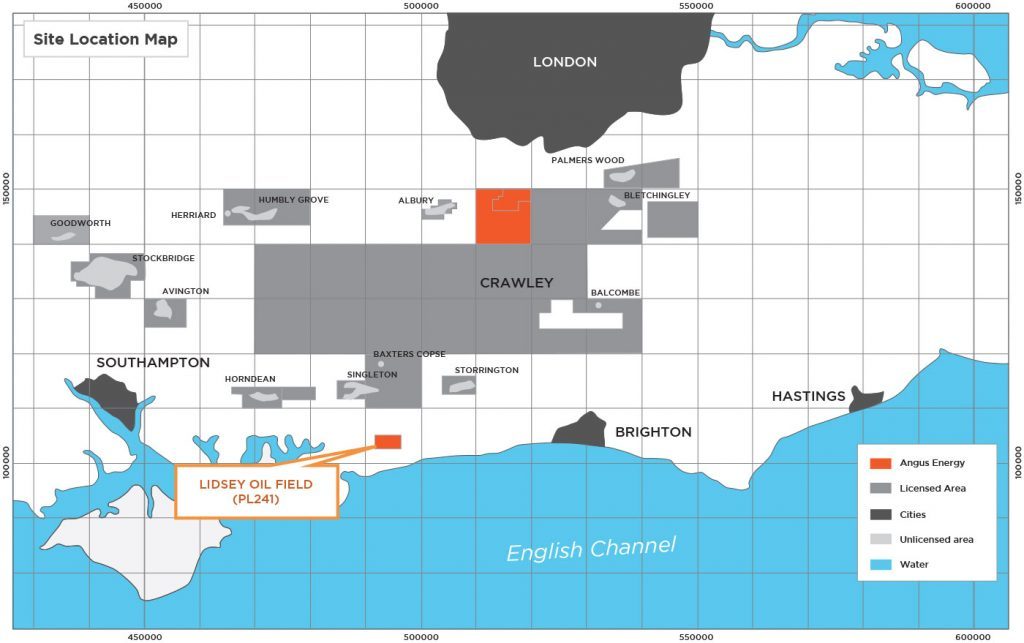
Angus Energy has successfully completed the drilling of the Lidsey-X2 production well in the south of England.
The company will produce from a “net oil pay” section of 443 metres (“m”) from the Great Oolite limestone reservoir.
The production reservoir section has a measured depth of 1,230-1,673m. True Vertical Depth (“TVD”) of the production section is measured to be 994.9m-1,009.3m.
The well reached its total depth objective at 1,700m and the slotted oil production liner has been installed. Following de-mobilisation of the BDF-28 drilling rig, the Lidsey-X2 well will be placed into production.
The well was drilled on time and on budget as outlined in previous Company guidance.
Towards the end of the horizontal section of the Great Oolite reservoir, initial analysis by the Company showed an unexpected change in the lithology of the well. The lithological change indicates a potential extension, continuing to the west of the original reservoir.
This entirely new and separate section of the Great Oolite reservoir would be at original conditions as it has never been produced. Further analysis will be undertaken to reach a final determination.
Drilling to the Great Oolite reservoir, the primary well objective, the Lidsey-X2 well passed through two additional potential production resevoirs, the Kimmeridge and the Oxford Clay source rocks. Both are positioned above the Great Oolite.
The Kimmeridge was encountered between 782.3m-862.4m MD (with a true vertical thickness of 66.2m). The layers in the well consisted of a mixed series of shales and limestones typical of the formation in the Weald Basin.
Natural fractures appear to be present but further detailed analysis of the image logging will be undertaken to quantify this. Samples have now been sent for geochemical analysis to verify if this section has seen pressures and temperatures in the past needed to generate oil in commercial quantities.
The Oxford Clay was found between 920.8m-1179.5m MD (with a true vertical thickness of 105.0m). The Oxford Clay is a potential oil source rock and has oil production potential where mature. The British Geological Society (“BGS”) reported Oxford Clay has “potential where mature (Ro > 0.6%), especially in lower parts and where free oil exists (perhaps limited to sweet-spots)”.
As part of the geochemical analysis, Angus Energy has also sent samples for further examination to ascertain whether the drilled section conforms with the previous BGS findings.
The companyhas planning permission for a third well at the site and can convert the existing Lidsey-X1 well into a water injector if required.
The Lidsey Oil Field is located on-shore at the southern edge of the Weald Basin, near Bognor Regis.
Paul Vonk, Angus Energy’s managing director, said: “The Company is in the process of bringing into production 443 metres of oil pay from the Lidsey-X2. I am pleased with the successful drilling of the well.
“We are encouraged the site offers further scope for development. Significantly, the company has upgraded the surface facilities at Lidsey to efficiently and safely managage all future production.
“I’m grateful to everyone on our team. They made drilling Lidsey-X2 a success by maintaining the highest standards, the most important of all being safe operations.”
Recommended for you
